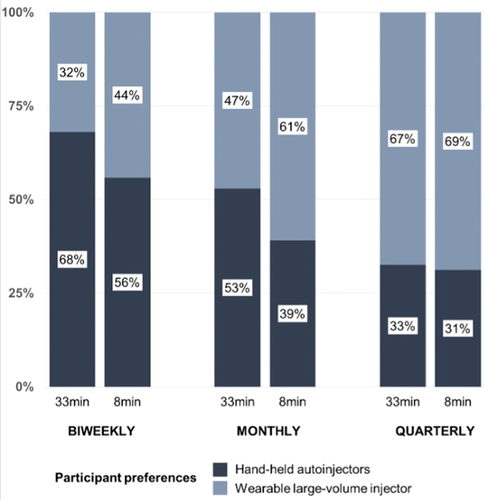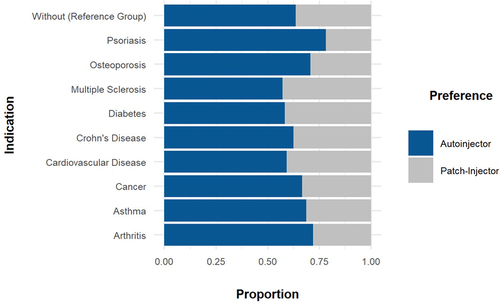Figures & data
Table 1. Overview of study participants (N = 191) by chronic disease diagnosis and self-injection therapy status.
Table 2. Instruments used in the online survey to assess (A) patient characteristics and (B) treatment attributes as potential predictor variables of injection device preference.
Table 3. Overview of the 12 pairwise choice tasks and respective treatment attributes presented to each participant in the online survey for the handheld autoinjector and wearable large-volume injector dosing options.
Table 4. Descriptive statistics and correlation coefficients for participant characteristics included in the study.
Table 5. Summary statistics for the logistic regression model based on patient characteristics with the preference for wearable large-volume injector as the response variable.
Figure 2. Injector preference based on varying wearable large-volume injector injection duration (8 min versus 33 min) and frequency (biweekly, monthly, and quarterly).

Table 6. Preferences for wearable large-volume injectors (WLVI) over handheld autoinjectors (HHA) for various treatment scenarios as a percentage of all preference statements (Preference statements WLVI/Total preference statements).
Table 7. Results of the mixed effects logistic regression model predicting preference for wearable large-volume injector based on treatment attributes.

